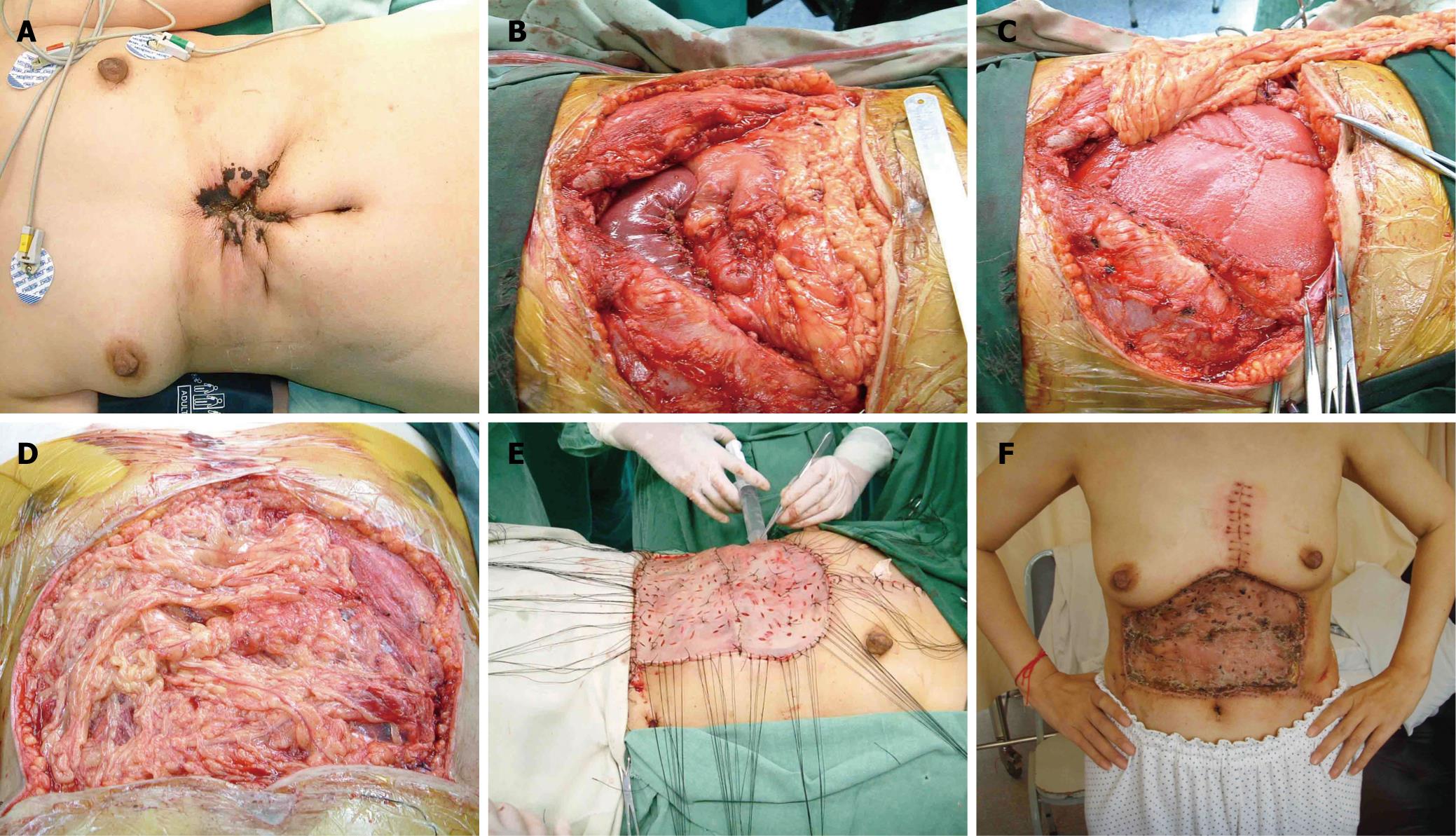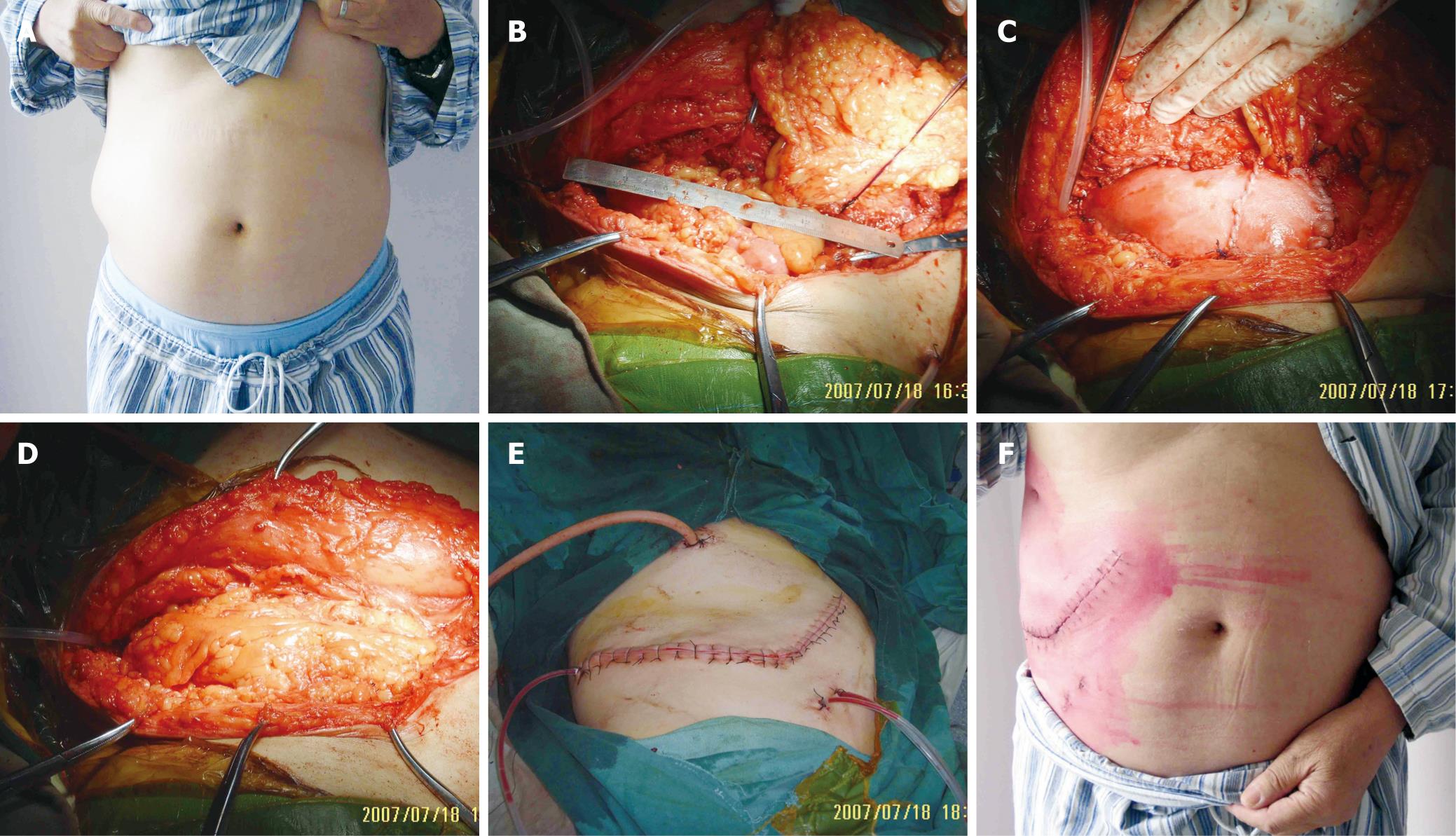Copyright
©2008 The WJG Press and Baishideng.
World J Gastroenterol. Feb 7, 2008; 14(5): 752-757
Published online Feb 7, 2008. doi: 10.3748/wjg.14.752
Published online Feb 7, 2008. doi: 10.3748/wjg.14.752
Figure 1 Case 1.
A: The view of the abdominal wall before operation; B: The defect after extensive tumor resection; C: Reconstruction with HADM which was placed in an underlay fashion. The pedicled omentum flap was brought into the subcutaneous plane by means of a 4-cm slit at the left subcostal site; D: The HADM patch was completely covered by the omentum flap; E: A left free thigh skin graft was raised to cover the skin defect; F: The view of abdominal wall 1 mo postoperatively.
Figure 2 Case 2.
A: The view of the abdominal wall before operation; B: The defect after extensive tumor resection; C: Reconstruction with HADM which was placed in an underlay fashion. The pedicled omentum flap was brought into the subcutaneous plane by means of a 4-cm slit at the right subcostal site; D: The HADM patch was completely covered by the omentum flap; E: The subcutaneous tissue and skin were closed above the omentum flap; F: The view of the abdominal wall 2 wk after operation.
- Citation: Gu Y, Tang R, Gong DQ, Qian YL. Reconstruction of the abdominal wall by using a combination of the human acellular dermal matrix implant and an interpositional omentum flap after extensive tumor resection in patients with abdominal wall neoplasm: A preliminary result. World J Gastroenterol 2008; 14(5): 752-757
- URL: https://www.wjgnet.com/1007-9327/full/v14/i5/752.htm
- DOI: https://dx.doi.org/10.3748/wjg.14.752














